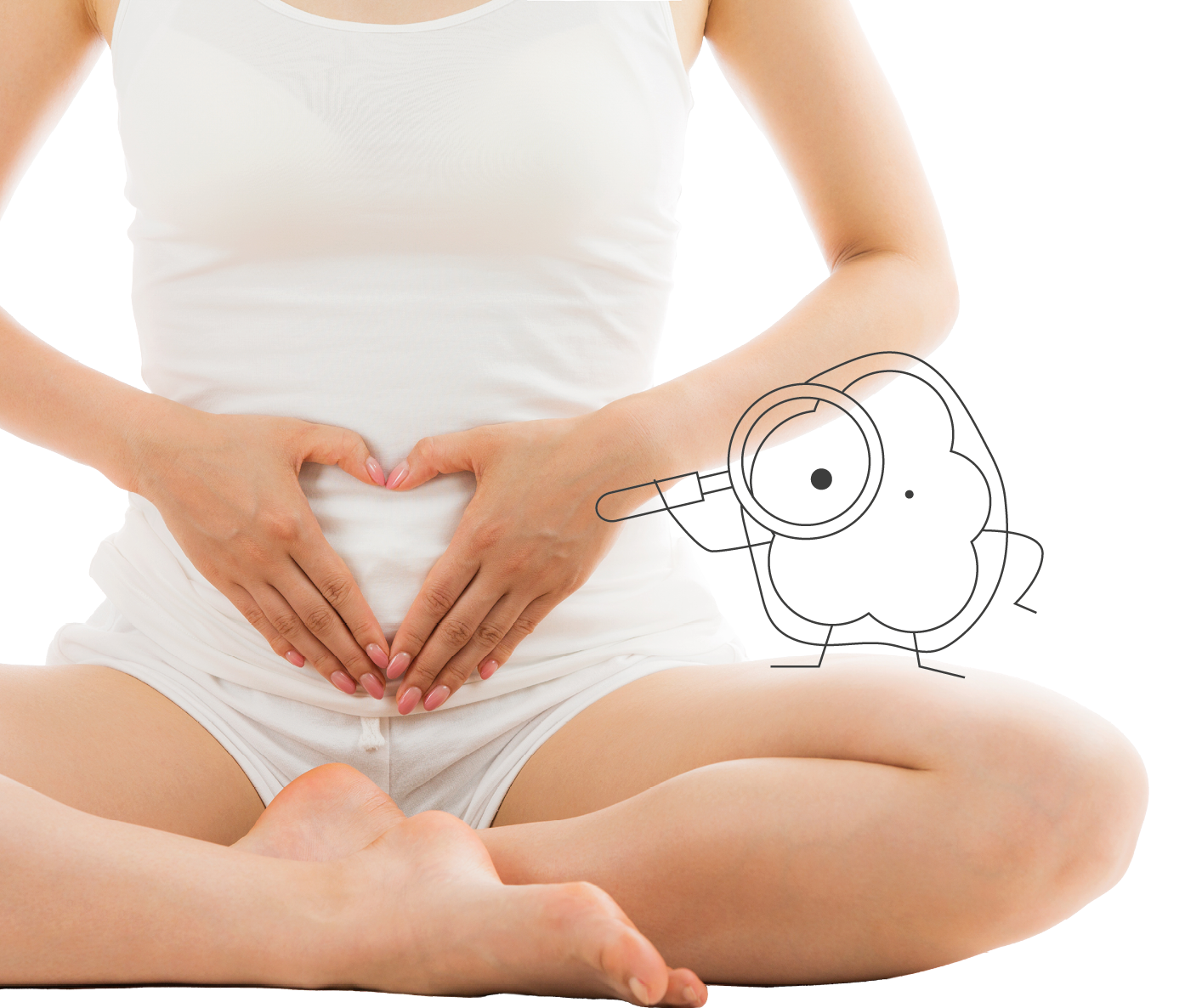
When should you test
When is it useful to test your gut microbiome?
Your health starts in your gut, where your gut bacteria play a crucial role. If you want to age healthily or investigate the cause of certain symptoms, this test can be valuable.
Some people take this test as a preventive measure, while most use it to determine if their symptoms are related to their microbiome. Symptoms that might indicate a need for testing include:
- Unexplained abdominal complaints
- Symptoms following antibiotic use
- Diarrhea or constipation
- Excessive gas
- Bloating
- Low energy
We are increasingly recognizing the crucial role the microbiome plays in your overall health. While scientific research is still evolving, we already know that the gut microbiome is linked to several conditions, including:
- Metabolic diseases: obesity, type II diabetes, non-alcoholic fatty liver disease, chronic inflammatory bowel diseases (such as ulcerative colitis and Crohn's disease)
- Allergies: eczema, asthma, hay fever, dust mite allergies
- Neurological conditions: depression
- Antibiotic-related gut infections: such as Clostridium difficile infection
Although research shows connections between these conditions and the microbiome, we do not yet know if modifying your microbiome will directly alleviate symptoms. While a healthy microbiome is essential for optimal health, and may help in managing the conditions mentioned, we cannot guarantee that altering your microbiome will lead to symptom relief.
Not sure if a test is right for you? Contact one of our healthcare professionals to discuss your needs and symptoms.
When should you avoid taking a sample?
It is generally possible to test the gut microbiome at any time. However, for the most accurate results, we recommend taking the test when you are in your normal routine. If you have recently been ill or completed a course of antibiotics, it's best to wait until you are back to your usual state before taking the test.
If illness or medication is part of your regular routine, you can proceed with the test as usual.
Unsure about when to take the test? Contact us, and we will help you choose the best time.
What we test
What does the MyMicroZoo test analyze?
Our test analyzes the types of bacteria present in your large intestine. We focus exclusively on bacteria because they make up the vast majority (~95%) of your microbiome. This is done using a 16S rRNA analysis, which examines the DNA of each bacterium in the sample to identify its species.
Can the test detect yeasts, parasites, or fungi?
The 16S rRNA analysis specifically targets bacterial DNA, so it cannot identify yeasts, parasites, or fungi.
If you are interested in testing for these, please contact us, and we can help you access additional tests through our partners.
Do you analyze human DNA?
Absolutely not! The 16S rRNA analysis focuses solely on bacterial DNA. It relies on the 16S gene, which is unique to bacteria and not found in human cells.

How to test
What should be included in my test kit?
When you receive your kit, please check to ensure you have all the necessary components:
- A tube with a sticker showing the kit code
- A swab
- The kit code (This appears three times in your kit: on the tube, on the blue edge of the box, and in the instruction booklet)
- A plastic mailer (a hard plastic container for the tube)
- A return envelope
- An instruction booklet
If you are missing any of these items, we apologize for the inconvenience. Please contact us, and we will promptly send you replacement materials.
When should I collect my sample?
Choose a quiet moment when you are not rushed. The collection process takes about five minutes, and filling out the questionnaire takes approximately 5-10 minutes. Please allocate sufficient time for both.
What should I keep in mind during sample collection?
Ensure that the swab only touches the stool and does not come into contact with any other surfaces, such as the toilet rim.
Also, avoid putting too much stool in the tube. A small amount about the size of a pea is ideal. Overfilling the tube can prevent the liquid inside from adequately reaching all the stool, which can affect the quality of your sample.
When should I send my sample?
The liquid in the tube preserves the DNA of the bacteria (which we analyze) and keeps your sample stable for at least six months.
We recommend sending your sample to us as soon as possible, but if you forget, you can still send it later with confidence that it will remain viable.

